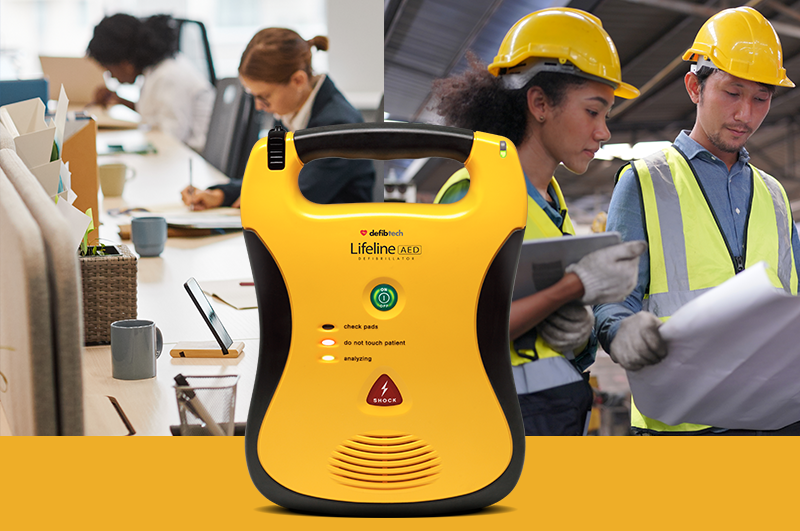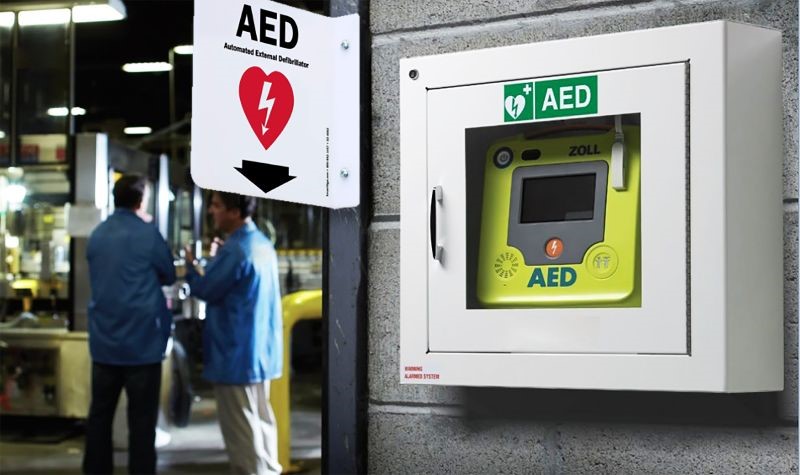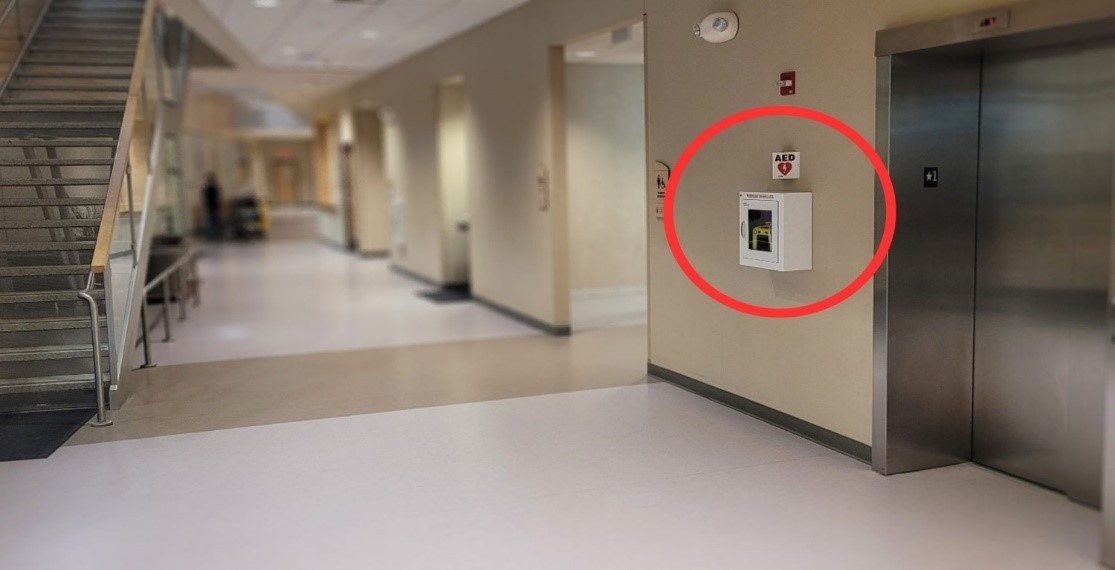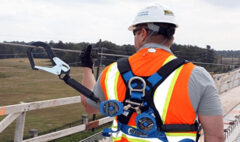Optimizing AED Performance: Prioritizing Inspection and Maintenance
Optimizing AED Performance: Prioritizing Inspection and Maintenance
In moments of cardiac emergencies, every second counts. Automated External Defibrillators (AEDs) are indispensable devices that can make the critical difference between life and death. These compact, portable devices are designed to deliver a shock to restore normal heart rhythm in cases of sudden cardiac arrest. However, like any other medical equipment, AEDs require meticulous inspection and maintenance to ensure their readiness for swift and effective deployment.
The Vital Role of AEDs in Saving Lives
Before delving into the intricacies of AED maintenance, let’s first appreciate the pivotal role these devices play in emergency situations. Sudden cardiac arrest (SCA) is a leading cause of death worldwide, and it can strike anyone, anywhere, at any time. In such scenarios, prompt intervention is crucial. AEDs are designed to be user-friendly, enabling even bystanders with minimal training to deliver life-saving treatment until professional medical help arrives.

Why Inspection and Maintenance Are Crucial?
The inspection and maintenance of Automated External Defibrillators are paramount due to the life-or-death nature of the situations they are designed to address. Individuals and organizations can gain the requisite knowledge and skills for inspection and maintenance of AEDs through online safety and health training. AEDs are relied upon during sudden cardiac arrests, where every passing moment significantly impacts the chances of survival. Regular inspection ensures that these devices are operational when needed, guarding against potential malfunctions that could delay or hinder life-saving interventions. Moreover, thorough maintenance not only upholds legal compliance with regulations mandating AED upkeep but also contributes to the devices’ longevity and optimal performance. By prioritizing inspection and maintenance protocols, organizations and individuals can instill confidence in the reliability of AEDs, ensuring they stand ready to deliver swift and effective responses during critical moments of need, potentially saving precious lives in the process.
Everything You Need to Know About AEDs in the Workplace
https://www.defibtech.com/news/latest/everything-you-need-to-know-about-aeds-in-the-workplace/
Best Practices for AED Inspection and Maintenance
Implementing best practices for the inspection and maintenance of Automated External Defibrillators is essential to ensure these life-saving devices remain reliable and effective. Regular inspections serve as the first line of defense, allowing for the early detection of any issues or abnormalities. Visual inspections should encompass checking for physical damage, ensuring all components are securely attached, and verifying the integrity of electrode pads. Any signs of wear and tear should prompt immediate action to address potential problems before they compromise the device’s functionality. Additionally, establishing a schedule for routine inspections monthly helps maintain consistency and ensures that no critical maintenance tasks are overlooked.
Battery checks represent a fundamental aspect of AED maintenance. AED batteries must be regularly monitored to ensure they are adequately charged and capable of powering the device when needed. Low battery levels or expired batteries can render the AED ineffective during emergencies, emphasizing the importance of proactive battery management. Establishing a battery replacement schedule based on manufacturer recommendations and usage patterns helps prevent unexpected battery failures and ensures that AEDs remain ready for immediate deployment. Furthermore, maintaining a supply of spare batteries on hand can mitigate potential disruptions in AED availability and facilitate quick replacements when necessary.

Software updates play a crucial role in optimizing AED performance and addressing potential vulnerabilities. Manufacturers periodically release software upgrades and patches to enhance device functionality, improve user experience, and address security concerns. Staying vigilant about software updates ensures that AEDs remain equipped with the latest features and protocols, enhancing their overall reliability and effectiveness. Implementing a system to track and apply software updates in a timely manner helps organizations maintain compliance with regulatory requirements and ensures that AEDs are consistently equipped to deliver optimal care during emergencies.
How to Inspect Pads and Spare Pads
Checking Automated External Defibrillator pads, as well as keeping spare pads in optimal condition, is crucial for ensuring the device’s readiness to deliver life-saving interventions. Regular inspection of AED pads involves verifying their integrity, expiration dates, and proper sealing. Firstly, visually inspect the pads to ensure they are sealed in their packaging and free from any visible damage or tampering. It’s essential to check the expiration date printed on the packaging and replace pads that have expired, as expired pads may not adhere properly to the patient’s skin or deliver effective shocks. Additionally, examine the adhesive gel surface of the pads to ensure it is intact, as any signs of drying or degradation may compromise their effectiveness during use. By conducting thorough checks of AED pads, users can ensure that the device is equipped with functional electrodes ready for immediate deployment in emergency situations.

Maintaining a supply of spare AED pads is equally important to mitigate any disruptions in emergency response efforts. Spare pads should be stored in a designated location that is easily accessible and protected from environmental factors such as moisture and extreme temperatures. When stocking spare pads, it’s important to adhere to the manufacturer recommendations regarding storage conditions and shelf life to preserve their effectiveness. Regularly check the expiration dates of spare pads and rotate stock as needed to ensure that the supply remains current and ready for use. By proactively managing spare pads and adhering to proper storage practices, organizations can enhance the reliability of their AEDs and minimize the risk of delays in critical medical interventions during cardiac emergencies.
AED Wall Cabinets
Storing Automated External Defibrillators in wall cabinets serves multiple purposes, all geared towards optimizing their accessibility, protection, and readiness for deployment during emergencies. Wall cabinets provide a designated and easily identifiable location for housing AEDs, ensuring that they are readily accessible to bystanders and responders when needed. Placing AEDs in strategic locations, such as high-traffic areas or centralized points within a building, increases their visibility and encourages prompt retrieval during cardiac emergencies, potentially saving valuable time in critical situations.
Moreover, wall cabinets offer protection for AEDs against environmental factors and unauthorized access. These cabinets are typically designed to shield AEDs from dust, moisture, and other contaminants that could compromise their functionality. Additionally, many wall cabinets feature locking mechanisms or tamper-evident seals to prevent unauthorized removal or tampering with the device. Securing AEDs in wall cabinets helps safeguard these life-saving devices from theft, vandalism, or misuse, ensuring they remain available and operational when needed most.

Furthermore, wall cabinets for AEDs often come equipped with additional features to enhance their utility and effectiveness. Some cabinets may include built-in alarm systems or visual indicators to alert bystanders and responders to the presence of an AED in the vicinity. Additionally, illuminated signage or clear labeling on the cabinet can further facilitate quick identification of AED locations, particularly in dimly lit or crowded environments. By providing a dedicated storage solution with built-in security and visibility features, wall cabinets contribute to the overall preparedness and effectiveness of AED programs, promoting a safer work environment and potentially saving lives in instances of sudden cardiac arrest.
Where AED’s Should be Placed in Buildings
Automated External Defibrillators should be strategically placed in buildings to ensure optimal accessibility and coverage in case of cardiac emergencies. Ideal locations for AED placement include high-traffic areas where the likelihood of sudden cardiac arrest incidents is higher, such as lobbies, atriums, lunch rooms, common areas, and close to elevators. Additionally, AEDs should be positioned in central and easily identifiable locations, preferably near main entrances or along primary evacuation routes, to minimize response time during emergencies. It’s also important to consider factors such as proximity to potential hazards, such as swimming pools or fitness centers, where the risk of cardiac events may be elevated. By strategically placing AEDs in buildings, organizations can maximize their effectiveness in providing timely intervention and potentially saving lives during critical moments of cardiac arrest.

Safety Result Professionals Can Made a Difference
Taking Safety Result Professionals’ low-cost, high-quality online safety and health training is important for individuals and organizations alike. With courses like the Introduction to CPR & AED: Basic, participants can gain essential knowledge and skills in using an Automated External Defibrillator (AED) and potentially save lives during cardiac emergencies. Moreover, through Safety Result Professionals’ Effective Workplace Safety Inspections online safety training course, individuals can learn comprehensive techniques for inspecting and maintaining AEDs, ensuring these life-saving devices are always in optimal condition for swift and effective deployment. Investing in such safety training not only enhances workplace safety but also empowers individuals and organizations with the knowledge and skills needed to respond effectively to emergencies, ultimately fostering a safer and more prepared work environment for everyone involved. For those seeking to bolster their safety knowledge, skills and competence, Safety Result Professionals stands as a trusted partner, offering a gateway to life-saving expertise. To learn more about their courses and commitment to safety of excellence, visit their website at www.safetyresultpros.com.
Conclusion
Automated External Defibrillators (AEDs) are indispensable tools in the battle against sudden cardiac arrest. However, their effectiveness hinges on regular inspection and maintenance. By adhering to best practices and ensuring AEDs are in optimal condition, we can maximize their reliability and potentially save countless lives. In emergencies where every second counts, a well-maintained AED can be the beacon of hope that makes all the difference. Let’s commit to keeping these life-saving devices in top-notch condition, ensuring they are always ready to serve their critical purpose.
Author: Dr. O’Neil G. Blake, Chief Executive Officer (CEO) of Safety Result Professionals
MS., MBA., MSc., CSP., ASP., CSHM., CSMP., MRSA.
Date: 03-27-2024












